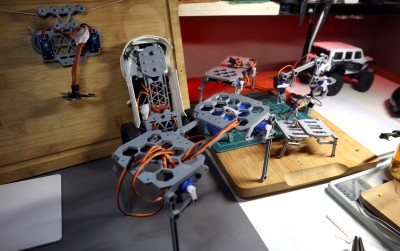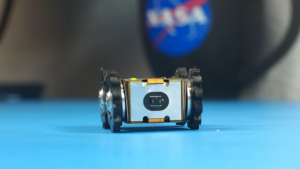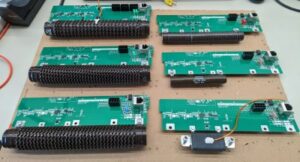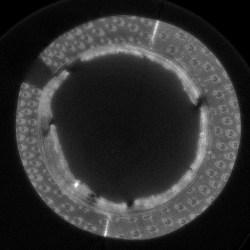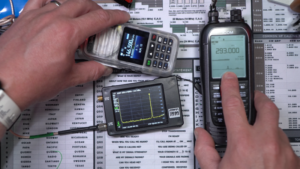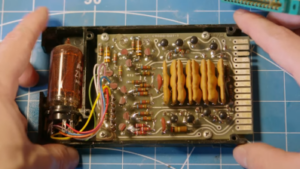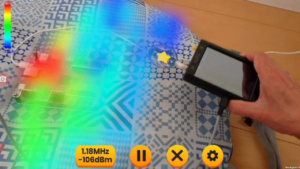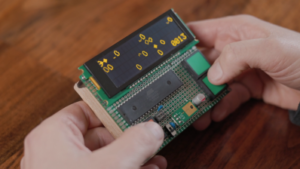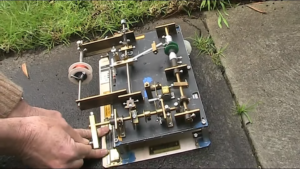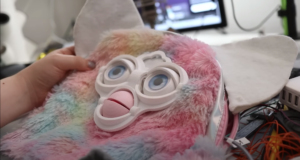They say time flies when you’re having fun, and doubly so when you’re hacking hardware. If you can believe it, we’ve already closed out the first challenge of the 2023 Hackaday Prize, and you know what that means — it’s time to announce the 10 finalists.
As a reminder, each of these projects not only takes home $500 USD, but moves on to the next round of judging. During the recently announced 2023 Supercon, we’ll announce the six projects that were selected by our panel of judges to collect their share of $100,000 in prize money– plus a residency at Supplyframe’s DesignLab and eternal hacker glory for the Grand Prize winner.
Teaching the Next Generation
The Re-engineering Education challenge asked hackers to come up with ideas that would help others learn new skills. As anyone reading Hackaday knows, learning is more than sitting down in a classroom with a textbook, so the best entries in this category were the ones that were interactive and promoted a hands-on approach.
Bolt Bots can take many forms.
” data-medium-file=”https://platoaistream.com/wp-content/uploads/2023/05/hackaday-prize-2023-meet-the-ten-re-engineering-education-finalists.jpg” data-large-file=”https://platoaistream.com/wp-content/uploads/2023/05/hackaday-prize-2023-meet-the-ten-re-engineering-education-finalists-2.jpg?w=800″ decoding=”async” loading=”lazy” class=”size-medium wp-image-588611″ src=”https://platoaistream.com/wp-content/uploads/2023/05/hackaday-prize-2023-meet-the-ten-re-engineering-education-finalists.jpg” alt width=”400″ height=”252″ srcset=”https://platoaistream.com/wp-content/uploads/2023/05/hackaday-prize-2023-meet-the-ten-re-engineering-education-finalists-2.jpg 1500w, https://platoaistream.com/wp-content/uploads/2023/05/hackaday-prize-2023-meet-the-ten-re-engineering-education-finalists-2.jpg?resize=250,157 250w, https://platoaistream.com/wp-content/uploads/2023/05/hackaday-prize-2023-meet-the-ten-re-engineering-education-finalists-2.jpg?resize=400,252 400w, https://platoaistream.com/wp-content/uploads/2023/05/hackaday-prize-2023-meet-the-ten-re-engineering-education-finalists-2.jpg?resize=800,503 800w” sizes=”(max-width: 400px) 100vw, 400px”>
For example, several of the finalists focus on robotics. There’s perhaps no better or more engaging way to get young people excited about STEM than having them build their own robots. But it can be a tall order for some schools, which is why projects like the $10 Robot from Neil Lambeth are so exciting. Dropping the cost of the bot’s control board down to the bare minimum not only means more schools can afford this kind of curriculum, but that students might even able to take their creations home to keep rather than having to leave them in the classroom.
Similarly, Saul’s Bolt Bots project aims to reduce the upfront cost of building robotic platforms by using 3D printed frame components and off-the-shelf servos. Finally, EL-KiDS from Sekolah Robot Indonesia uses a modular no-code approach to building robots which is perfect for younger students.
A calculator for a more civilized age.
” data-medium-file=”https://platoaistream.com/wp-content/uploads/2023/05/hackaday-prize-2023-meet-the-ten-re-engineering-education-finalists-1.jpg” data-large-file=”https://platoaistream.com/wp-content/uploads/2023/05/hackaday-prize-2023-meet-the-ten-re-engineering-education-finalists-5.jpg?w=689″ decoding=”async” loading=”lazy” class=” wp-image-588612″ src=”https://platoaistream.com/wp-content/uploads/2023/05/hackaday-prize-2023-meet-the-ten-re-engineering-education-finalists-1.jpg” alt width=”350″ height=”317″ srcset=”https://platoaistream.com/wp-content/uploads/2023/05/hackaday-prize-2023-meet-the-ten-re-engineering-education-finalists-5.jpg 1320w, https://platoaistream.com/wp-content/uploads/2023/05/hackaday-prize-2023-meet-the-ten-re-engineering-education-finalists-5.jpg?resize=250,227 250w, https://platoaistream.com/wp-content/uploads/2023/05/hackaday-prize-2023-meet-the-ten-re-engineering-education-finalists-5.jpg?resize=400,363 400w, https://platoaistream.com/wp-content/uploads/2023/05/hackaday-prize-2023-meet-the-ten-re-engineering-education-finalists-5.jpg?resize=689,625 689w” sizes=”(max-width: 350px) 100vw, 350px”>
The judges were also impressed with a number of computing projects. While affordable Linux-powered Chromebooks have become a welcome sight in many schools, they’re best used for consuming media and doing classwork — you won’t learn much about the nuts and bolts of computing with one.
For that, you need something like Lee Hart’s 1802 MemberChip Card. This pocket-sized computer uses RCA’s 1802 microprocessor and 64 KB of memory (split between RAM and ROM) to run BASIC, FORTH, LISP, and a few games. Best of all, students can build it themselves with the help of a Heathkit-style instruction manual.
We also saw a number of mobile computing devices entered into the Re-engineering Education challenge, such as the Python Programmable Calculator (PYPRCA) by bobricius and the NEOklacker by Spider Jerusalem. While you’ll find few students without their own mobile gadgets these days, the same rule applies as with the Chromebooks; they’re great tools, but you don’t learn much about what actually makes them tick by using them. Giving students a mobile device they can build, tweak, and rebuild, offers a whole new world of possibilities.
Re-engineering Education Finalists
Lending a Hand
The Re-engineering Education challenge might be over, but the 2023 Hackaday Prize is just getting started. We’re currently in the middle of the Assistive Tech challenge, which tasks hackers with developing devices that can help those with disabilities earn back a bit of their independence — a noble goal if there ever was one. Afterwards, we’ve still got three more challenges to go before this year’s competition crosses the finish line.
As always, we wouldn’t be able to put on the Hackaday Prize — now in its tenth year — without the support of our incredible sponsors. Special thanks to Supplyframe and Digi-Key for helping us bring these ideas to life.
- SEO Powered Content & PR Distribution. Get Amplified Today.
- PlatoAiStream. Web3 Data Intelligence. Knowledge Amplified. Access Here.
- Minting the Future w Adryenn Ashley. Access Here.
- Buy and Sell Shares in PRE-IPO Companies with PREIPO®. Access Here.
- Source: https://hackaday.com/2023/05/11/hackaday-prize-2023-meet-the-ten-re-engineering-education-finalists/
- :is
- :not
- $UP
- 000
- 1
- 10
- 2023
- 3d
- a
- Able
- About
- actually
- affordable
- afterwards
- age
- aims
- All
- already
- also
- always
- and
- Announce
- announced
- anyone
- approach
- ARE
- AS
- At
- back
- basic
- BE
- become
- before
- believe
- BEST
- Better
- between
- Bit
- board
- Bolt
- bots
- bring
- build
- Building
- but
- by
- CAN
- Category
- challenge
- challenges
- Chromebooks
- closed
- collect
- come
- competition
- components
- computer
- computing
- control
- Cost
- creations
- Curriculum
- Days
- developing
- device
- Devices
- disabilities
- doing
- Dont
- doubly
- down
- Dropping
- during
- each
- earn
- Education
- engaging
- entered
- Ether (ETH)
- Even
- EVER
- example
- excited
- few
- finalists
- Finally
- Find
- finish
- First
- Focus
- For
- forms
- forth
- FRAME
- from
- fun
- Gadgets
- Games
- get
- getting
- Giving
- Go
- goal
- great
- hacker
- hackers
- hacking
- hands-on
- Hardware
- Have
- having
- help
- helping
- Home
- HTTPS
- ideas
- if
- impressed
- in
- incredible
- independence
- Indonesia
- interactive
- into
- IT
- ITS
- jpg
- just
- Keep
- Kind
- Know
- LEARN
- learning
- Leave
- Life
- like
- Line
- MAKES
- manual
- many
- max-width
- means
- Media
- Meet
- Memory
- Middle
- might
- minimum
- Mobile
- mobile device
- modular
- more
- moves
- much
- Need
- New
- next
- no
- Noble
- now
- number
- of
- Offers
- on
- ONE
- ones
- only
- or
- order
- Others
- our
- out
- over
- own
- panel
- People
- perfect
- perhaps
- Platforms
- plato
- Plato Data Intelligence
- PlatoData
- plus
- possibilities
- prize
- projects
- Promoted
- put
- RAM
- rather
- Reading
- reduce
- robot
- robotics
- robots
- round
- Rule
- Run
- same
- say
- Schools
- selected
- several
- Share
- Sight
- Sitting
- SIX
- skills
- So
- some
- something
- special
- split
- Sponsors
- started
- Stem
- Still
- Students
- such
- support
- Take
- takes
- tasks
- tech
- ten
- textbook
- than
- thanks
- that
- The
- their
- Them
- themselves
- There.
- These
- they
- this
- those
- three
- time
- to
- tools
- us
- USD
- used
- using
- was
- Way..
- we
- welcome
- were
- What
- when
- which
- while
- whole
- why
- winner
- with
- without
- world
- would
- year
- you
- young
- Younger
- zephyrnet

